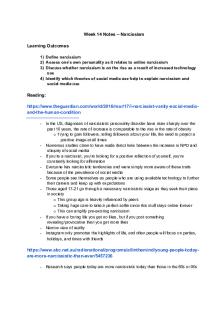Aribia notes week 1-4 on preislamic aribia PDF

| Title | Aribia notes week 1-4 on preislamic aribia |
|---|---|
| Author | Daiya Chen |
| Course | Arabic Civilization & Culture |
| Institution | Binghamton University |
| Pages | 6 |
| File Size | 75.7 KB |
| File Type | |
| Total Views | 146 |
Summary
The notes cover most of the important concept and materials of the lecture(he doesn't use powerpoint so it's really helpful...
Description
The neglect of Arabia reflects the insignificance in world history before the emergence of Islam periphery of the great empires
a central position between India, Africa, Mesopotamia and the Mediterranean world goods(scents)- civilization reservoir of military
hough Arabia was a country of diverse peoples and traditions, it is the Arabs whom we hear of most and who rise to increasing prominence in the course of Arabian history.
In other words there was an inexorable Arabisation of Arabia, though at the same time the Arabs were being shaped by the cultural traditions of south and east Arabia. This gradual transformation of the originally diverse peoples of Arabia into a single ethnic group is a major aspect of the region’s 5
history
SOURCES FOR THE HISTORY OF ARABIA poetry paints observations of non-Arabian peoples, such as Assyrians, Babylonians, Israelites, Greeks, Romans and Persians. (outsider’s view )
east Arabia south Arabia north and central Arabia
EAST ARABIA
THE BRONZE AGE (c.3200–1300 BC) dominated by two great centres of power, namely Mesopotamia and Egyp an economic boom Kassites, a people of unsure origin who assimilated to Babylonian culture and held southern Mesopotamia for some four centuries (1595–1158 BC). THE IRON AGE (c.1300–330 BC)2 inter- regional trade in the eastern Mediterranean and greater development of rural hinterlands by the city-states of Syria and Palestine.
THE GRECO-ROMAN/PARTHIAN PERIOD (c.330 BC–AD 240) shifted westwards, the Persian empire being swept away by the conquests of the violent, drunken, emotionally unstable but brilliant Alexander, who is usually dubbed ‘the Great’. most important trading entity in this region in Hellenistic times, functioning as a supplier of Arabian aromatics and goods from India,
THE BYZANTINE/SASANIAN PERIOD (c.240–630 AD)
Iranian dynasty moved towards greater administrative centralisation and absolutist government confrontations between tribes allied to the Iranians and others hostile to them, some involving Iranian troops. Sasanian period was also marked by the introduction and expansion of Christianity in east Arabia.
archaeological investigation of east Arabia is considerably more advanced than that of the rest of the peninsula The large quantity of foreign-produced goods discovered in east Arabia from the late third/early second millennium BC and the Greco-Roman period demonstrates that it was particularly active in international trade at these times.
SOUTH ARABIA THE IRON AGE (c.1300–330 BC) political power was in general fragmented trade contacts with the outside world
Economy desolate desert in Arabia no permanent rivers or lakes in Arabia and rainfall is limited to certain times of the year Terracing, the conversion of valley slopes into stone shelves, broke the pace of the floodwater,
Canals were cut to smooth out flooding irregularities dams -divert some of the floodwater to plots nimal management (pastoralism) therefore allows greater flexibility of move- ment than crop management. A second development was the gradual emergence of an exchange- based economy, which inaugurated a shift in pastoralist interests from producing food solely for their own households to providing com- modities for customers as well.
Hunting ECONOMIC RELATIONS BETWEEN NOMADIC AND SETTLED PEOPLES The basic premise of nomad life is autonomy and its corollary of equality nomad–sedentary relations as inherently antagonistic radiocarbon dating of residual charcoal in slags suggests that gold and silver mining and smelting were carried out c.950 BC and again in the period AD 430–830.
TRIBE tribes have no specialised institutions of law and order, so a person’s life, honour and goods were protected by his relatives, who were obliged to assist him in trouble and to avenge or seek compensation for him if he was wronged. LAW AND LEGISLATION Arab poet Labid once spoke of a leader from his own kin group as ‘one of a tribe whose forefathers laid down for them a sunna, and every folk has a sunna and its imm’.
Diversity in marriage monogamy, polygyny A particularly long-lived form of feasting is the ritual banquet (mrzh’), a celebration attended by a select group of colleagues in honour . of a particular deity or deities.
Language There are two great alphabetic traditions from which all alphabets are derived: the northwest Semitic (normally called Phoenician, from which the Greek alphabet is descended) and the Arabian Almost all the languages used in Arabia belong to the Semitic family, the members of which bear a close resemblance to one another, most obviously in the sphere of word structure. The modification of the root letters is not arbitrary, but highly schematic, and each schema makes clear the grammatical form of the word and its specific sense.
Juridical
Pre-Islamic Arabic poetry is subject to an elaborate set of conven- tions with regard to both content and form Love might also constitute a major theme, then treating of courting, flirtation and conquests, of unfulfilled passion and unrequited love, of heart-enthralling beauty and soul-bewitching charms. The departure might then entail description, whether of the one left behind or repaired to, of the riding animal, or of the scenery passed on the way, or again this might form a topic in its own right....
Similar Free PDFs
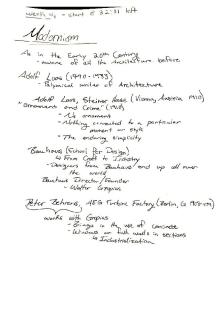
Week 14 Notes
- 9 Pages
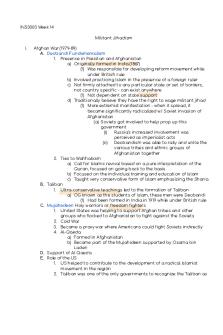
INS3003 Week 14 Notes
- 5 Pages
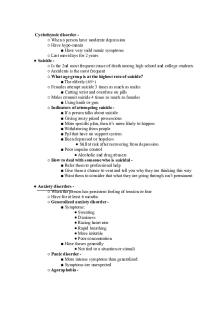
Week 14 Genetic & Mutations notes
- 48 Pages

M&M - Week 14 Notes
- 1 Pages

Frustration - notes on week 1
- 10 Pages
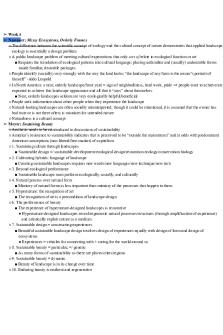
ED1 Reading Notes (week 4-14)
- 20 Pages

Ch. 14 Notes - Based on the book
- 8 Pages

Week 14 Lab Worksheet
- 2 Pages

Week 14 GST - GST
- 4 Pages

Disease Processes Week 14
- 6 Pages

Week 14 Assignment
- 3 Pages
Popular Institutions
- Tinajero National High School - Annex
- Politeknik Caltex Riau
- Yokohama City University
- SGT University
- University of Al-Qadisiyah
- Divine Word College of Vigan
- Techniek College Rotterdam
- Universidade de Santiago
- Universiti Teknologi MARA Cawangan Johor Kampus Pasir Gudang
- Poltekkes Kemenkes Yogyakarta
- Baguio City National High School
- Colegio san marcos
- preparatoria uno
- Centro de Bachillerato Tecnológico Industrial y de Servicios No. 107
- Dalian Maritime University
- Quang Trung Secondary School
- Colegio Tecnológico en Informática
- Corporación Regional de Educación Superior
- Grupo CEDVA
- Dar Al Uloom University
- Centro de Estudios Preuniversitarios de la Universidad Nacional de Ingeniería
- 上智大学
- Aakash International School, Nuna Majara
- San Felipe Neri Catholic School
- Kang Chiao International School - New Taipei City
- Misamis Occidental National High School
- Institución Educativa Escuela Normal Juan Ladrilleros
- Kolehiyo ng Pantukan
- Batanes State College
- Instituto Continental
- Sekolah Menengah Kejuruan Kesehatan Kaltara (Tarakan)
- Colegio de La Inmaculada Concepcion - Cebu

